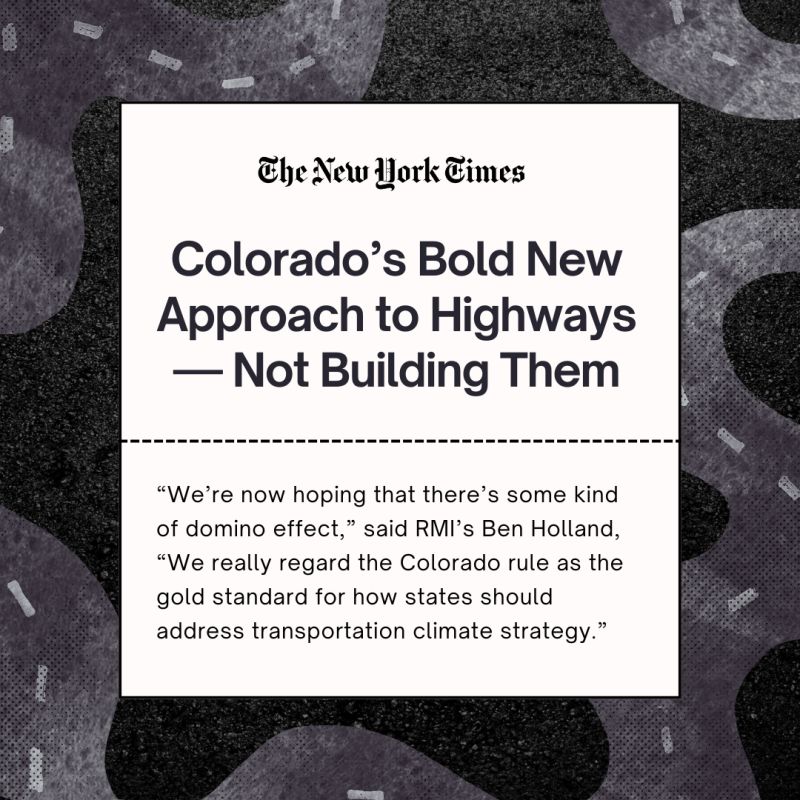By Megan Kimble
May 31, 2024
When Interstate 25 was constructed through Denver, highway engineers moved a river.
It was the 1950s, and nothing was going to get in the way of building a national highway system. Colorado’s governor and other dignitaries, including the chief engineer of the state highway department, acknowledged the moment by posing for a photo standing on bulldozer tracks, next to the trench that would become Interstate 25.
Today, state highway departments have rebranded as transportation agencies, but building, fixing and expanding highways is still mostly what they do.
So it was notable when, in 2022, the head of Colorado’s Department of Transportation called off a long planned widening of Interstate 25. The decision to do nothing was arguably more consequential than the alternative. By not expanding the highway, the agency offered a new vision for the future of transportation planning.
In Colorado, that new vision was catalyzed by climate change. In 2019, Gov. Jared Polis signed a law that required the state to reduce greenhouse gas emissions by 90 percent within 30 years. As the state tried to figure out how it would get there, it zeroed in on drivers. Transportation is the largest single contributor to greenhouse gas emissions in the United States, accounting for about 30 percent of the total; 60 percent of that comes from cars and trucks. To reduce emissions, Coloradans would have to drive less.

